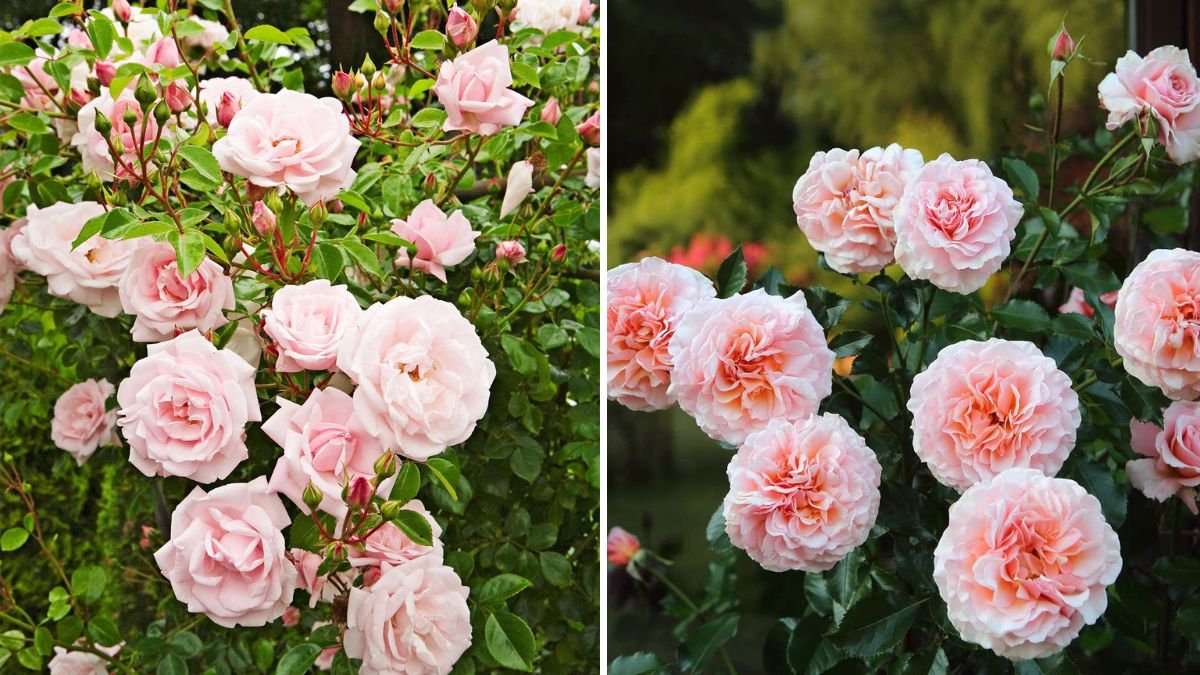Roses are among the most cherished flowering plants in gardens worldwide, admired for their fragrance, vibrant colors, and elegance. Extending their blooming period from spring through fall requires careful attention to plant selection, soil preparation, watering, pruning, and pest management. Understanding rose growth cycles and implementing consistent care ensures continuous flowering, healthier plants, and an aesthetically pleasing garden.
This article explores strategies and techniques to maintain roses in full bloom throughout the growing season, including planting practices, fertilization, pruning, disease management, and environmental considerations.
1. Choosing the Right Rose Varieties
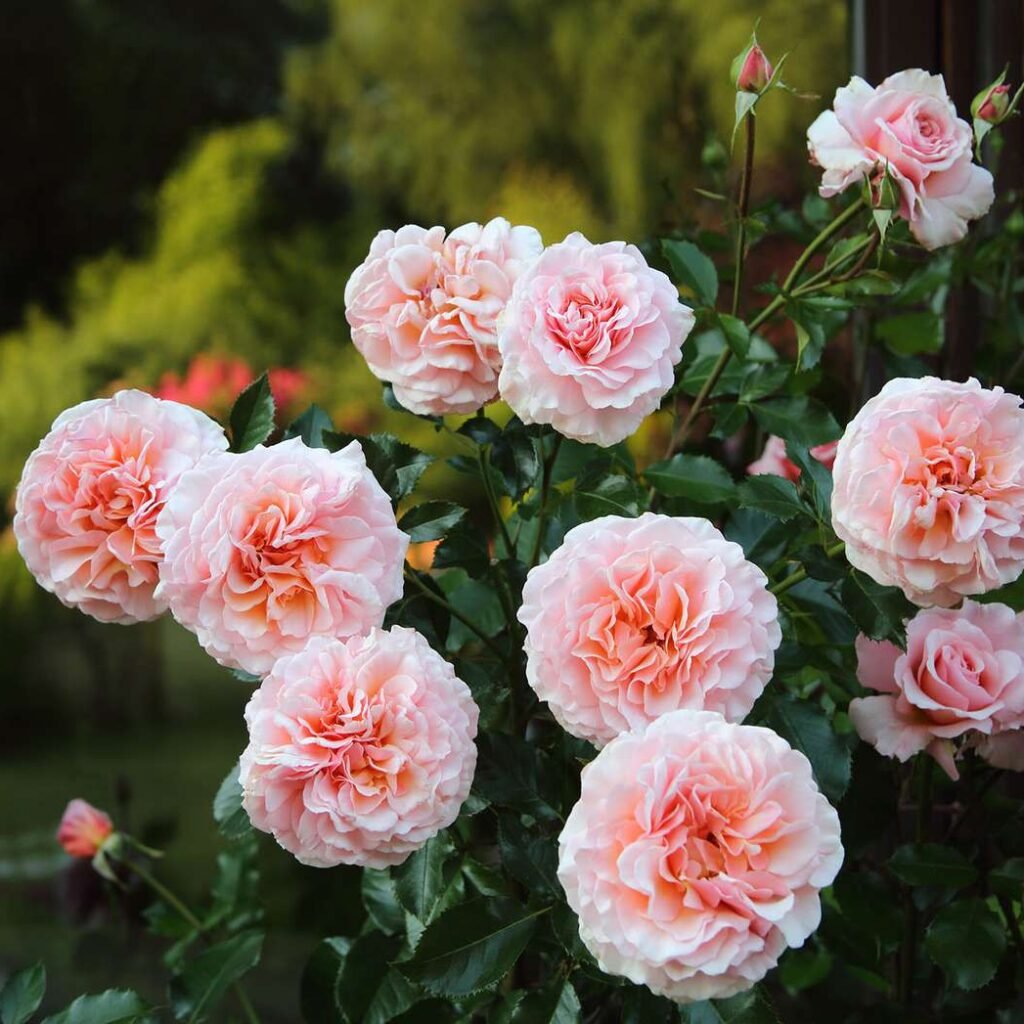
Selecting appropriate rose varieties is the first step to extended blooming:
- Repeat-Blooming Roses (Remontant): Produce flowers continuously from spring to fall. Examples: Hybrid Teas, Floribundas, Grandifloras.
- Shrub Roses: Hardy, disease-resistant, and long-blooming, ideal for low-maintenance gardens. Examples: Knock Out® series, David Austin shrub roses.
- Climbing Roses: Extend blooms along trellises or fences, providing continuous display.
- Miniature Roses: Perfect for containers, offering multiple bloom cycles in a season.
Choosing disease-resistant, repeat-blooming varieties minimizes maintenance and ensures prolonged flowering.
2. Planting Roses for Maximum Blooming
Proper planting sets the foundation for healthy, long-flowering roses:
- Location: Choose a sunny spot with at least 6–8 hours of direct sunlight.
- Soil: Well-draining, fertile soil rich in organic matter. Ideal pH: 6.0–6.5.
- Planting Depth: Plant roses at the same depth as in their nursery container; avoid burying the graft union.
- Spacing: Provide sufficient space between plants for air circulation, reducing disease risk.
- Mulching: Apply organic mulch to retain moisture, regulate soil temperature, and suppress weeds.
Well-planted roses are healthier, more vigorous, and bloom more profusely.
3. Fertilization for Continuous Bloom
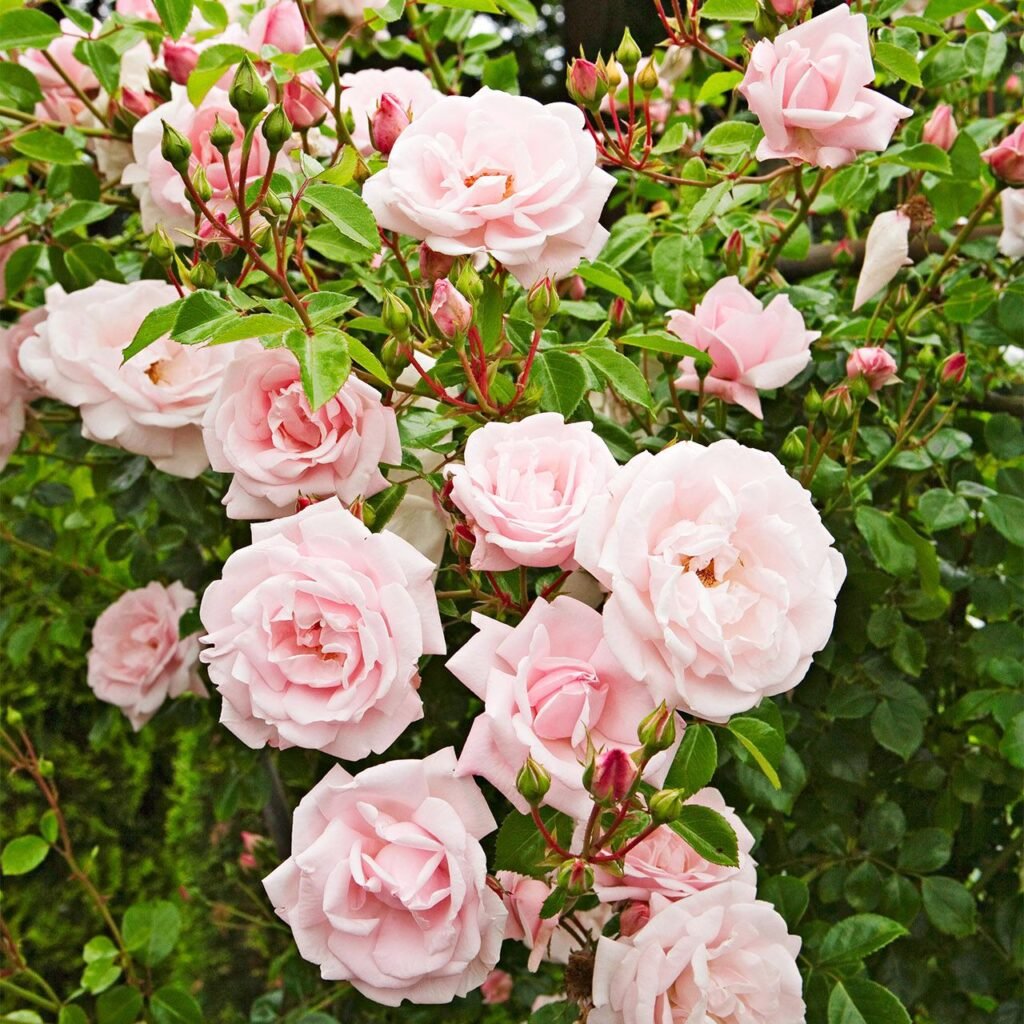
Roses are heavy feeders and require regular nutrients to maintain flowering:
- Balanced Fertilizer: Use NPK 10-10-10 or 12-12-12 for general growth.
- Bloom-Enhancing Fertilizer: High-phosphorus fertilizers encourage abundant flowers.
- Frequency: Fertilize every 4–6 weeks during the growing season.
- Organic Options: Compost, well-rotted manure, fish emulsion, or seaweed extract provide nutrients and improve soil health.
- Micronutrients: Iron, magnesium, and calcium strengthen stems and enhance bloom quality.
Proper nutrition ensures vibrant flowers and extended blooming.
4. Pruning Techniques for Extended Flowering
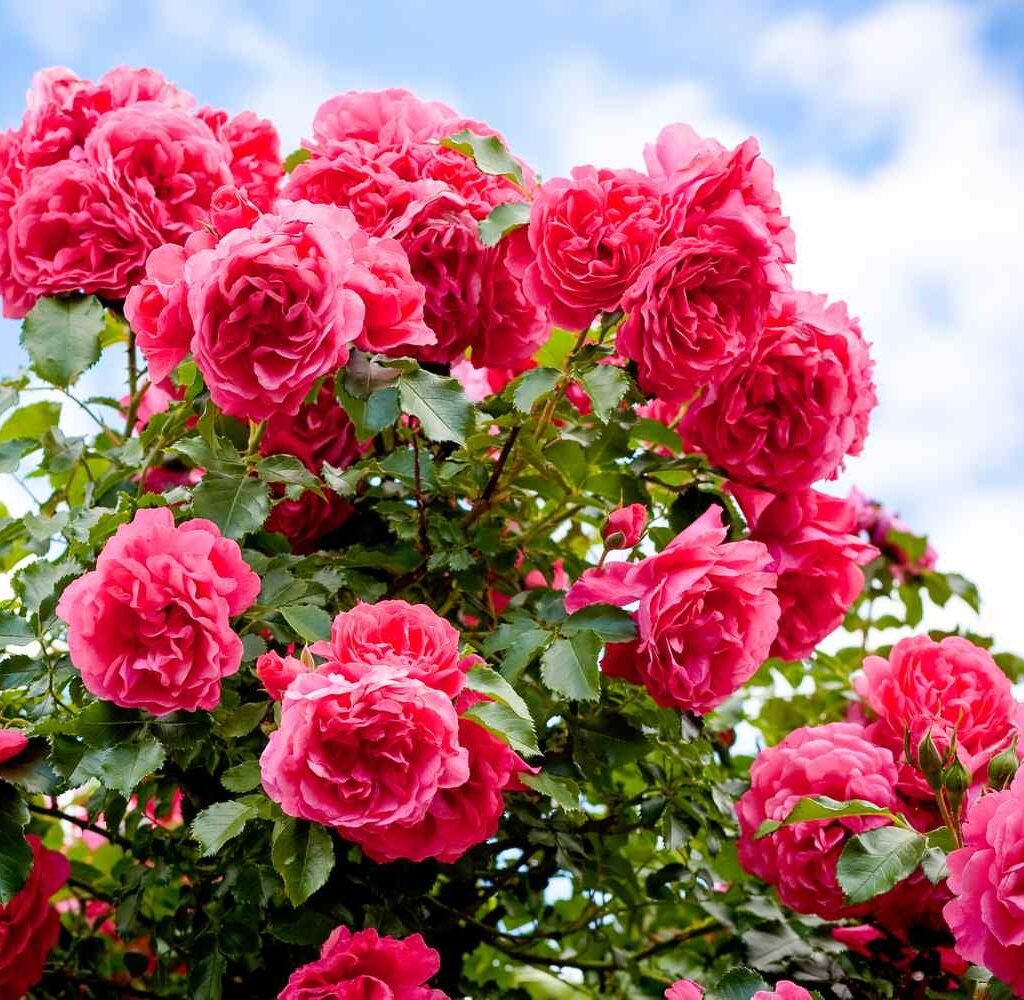
Pruning is essential for maintaining rose health and prolonging bloom periods:
- Spring Pruning: Remove dead, weak, or crossing stems to promote vigorous growth.
- Deadheading: Regularly remove faded blooms to encourage new flowers.
- Light Summer Pruning: Trim long shoots or damaged stems to redirect energy toward blooming.
- Fall Pruning: Minimal pruning, mainly for shaping and removing diseased wood before winter.
Effective pruning stimulates new growth, enhances air circulation, and maximizes flowering.
5. Watering Practices for Healthy Roses
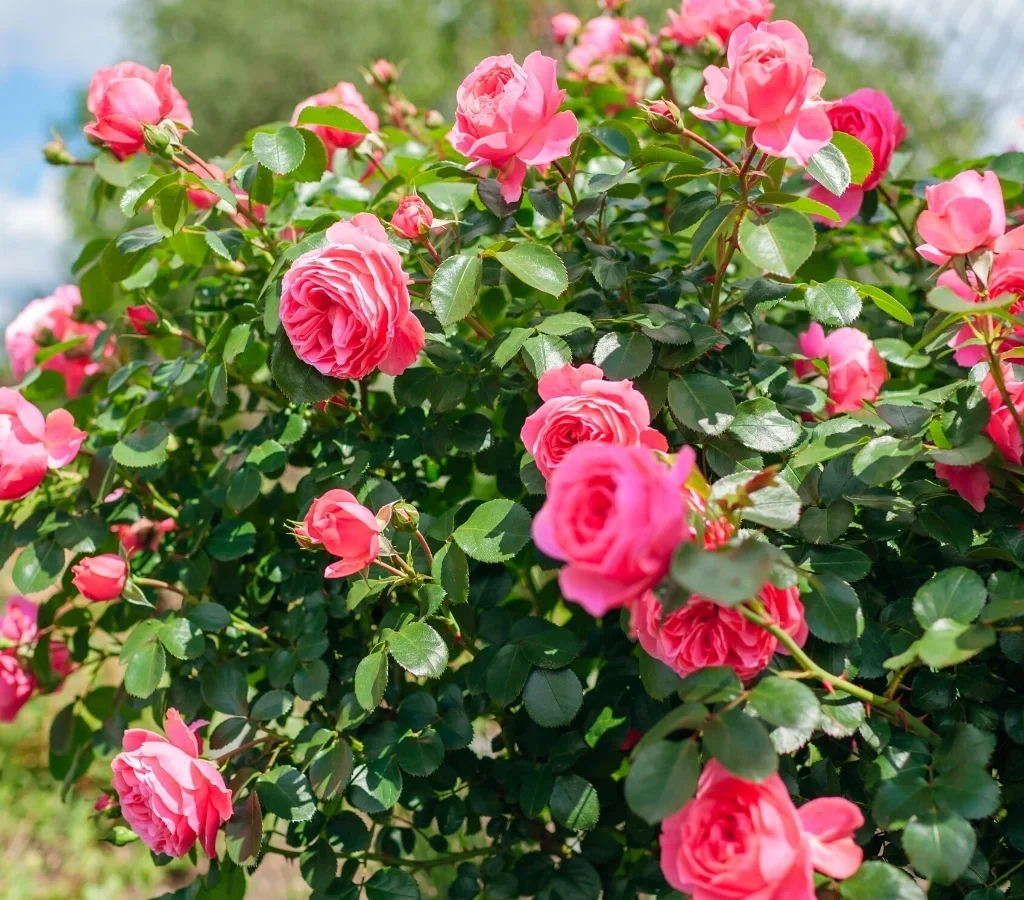
Consistent watering is critical for maintaining blooms:
- Frequency: Deep watering 2–3 times per week, more in hot, dry conditions.
- Method: Water at soil level, avoiding wetting leaves to reduce fungal risk.
- Mulch: Helps retain soil moisture and regulate root temperature.
- Container Roses: May require more frequent watering due to faster soil drying.
Proper watering prevents stress, leaf drop, and premature bloom fading.
6. Sunlight Requirements
Roses thrive in full sun, which directly impacts bloom quantity:
- Daily Exposure: Minimum 6 hours of direct sunlight; 8+ hours is ideal.
- Air Circulation: Combine sunlight with good airflow to reduce fungal diseases.
- Shade Management: Avoid planting near tall trees or structures that cast prolonged shadows.
Adequate sunlight ensures strong stems, healthy leaves, and prolific flowering.
7. Managing Pests and Diseases
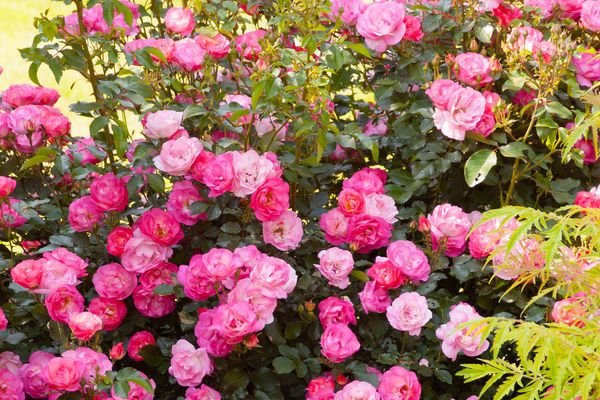
Roses are prone to various pests and diseases, which can reduce bloom duration:
- Common Pests: Aphids, spider mites, thrips, Japanese beetles.
- Diseases: Black spot, powdery mildew, rust, botrytis blight.
- Preventive Measures: Inspect regularly, remove infected leaves, prune for airflow.
- Organic Control: Neem oil, insecticidal soap, horticultural oil, or beneficial insects like ladybugs.
- Chemical Solutions: Use fungicides or insecticides when necessary, following label instructions.
Integrated pest management ensures healthy plants capable of prolonged flowering.
8. Seasonal Care Adjustments
Adjusting care practices according to the season enhances blooming:
- Spring: Fertilize, prune, and inspect for early pests.
- Summer: Provide consistent water, mulch, and deadhead regularly.
- Autumn: Reduce fertilization, prune lightly, and remove fallen leaves to prevent disease.
- Winter: Protect grafted roses with mulch or coverings in cold climates; reduce watering.
Seasonal adjustments maintain plant health and maximize bloom duration.
9. Supporting Roses for Optimal Growth
Some rose varieties benefit from structural support:
- Climbing Roses: Use trellises, arbors, or fences to train stems and encourage blooms along vertical surfaces.
- Hybrid Teas: Stake taller varieties to prevent stems from bending under heavy blooms.
- Container Roses: Use cages or supports for upright growth.
Proper support ensures flowers remain visible, stems remain strong, and plants continue blooming.
10. Mulching for Continuous Flowering
Mulching provides multiple benefits for bloom maintenance:
- Moisture Retention: Reduces soil drying and water stress.
- Temperature Regulation: Keeps roots cool in summer and insulated in winter.
- Nutrient Supply: Organic mulch decomposes, enriching the soil.
- Weed Control: Reduces competition for nutrients.
Mulching contributes to healthy growth, vibrant blooms, and prolonged flowering.
11. Companion Planting for Bloom Enhancement
Companion plants can improve rose health and aesthetics:
- Herbs: Lavender, chives, or basil repel pests and attract pollinators.
- Flowers: Marigolds, nasturtiums, or alyssum enhance visual appeal and deter pests.
- Ground Cover: Low-growing plants like thyme or creeping phlox reduce soil moisture loss and protect roots.
Companion planting promotes a balanced ecosystem, improving rose bloom and vitality.
12. Tips for Continuous Bloom
- Regular Deadheading: Removes spent flowers to encourage new buds.
- Consistent Fertilization: Maintain nutrient availability throughout the season.
- Water and Mulch Management: Prevent stress and root damage.
- Disease Monitoring: Early detection prevents bloom reduction.
- Prune Wisely: Encourage new shoots without compromising plant energy.
Following these tips ensures roses produce flowers from spring through fall with minimal interruption.
13. Designing a Year-Round Rose Garden
- Color Planning: Choose rose varieties with staggered bloom times and diverse colors for continuous interest.
- Container Placement: Place containers to maximize sunlight and airflow.
- Mixed Planting: Combine roses with seasonal annuals or perennials for added color and contrast.
- Vertical Elements: Use trellises and arches to extend bloom display vertically.
Thoughtful design keeps the garden visually appealing and continuously blooming.
Conclusion
Maintaining roses in bloom from spring through fall requires a combination of careful plant selection, proper planting, regular fertilization, pruning, watering, and pest management. By understanding the growth cycles of roses and providing consistent care, gardeners can enjoy healthy, vibrant plants with continuous flowers. Seasonal adjustments, mulching, and companion planting further support sustained blooming and plant health.
With these practices, a rose garden—whether in beds, containers, or balconies—can remain a colorful, fragrant, and thriving feature of the home environment throughout the growing season.
